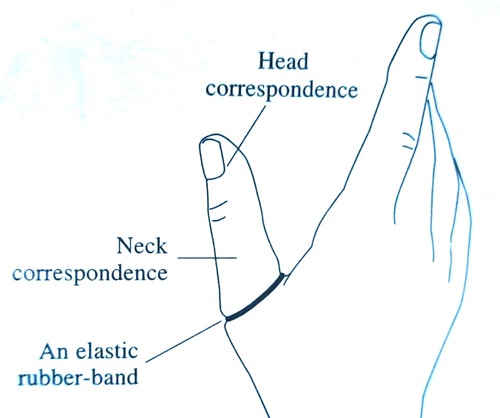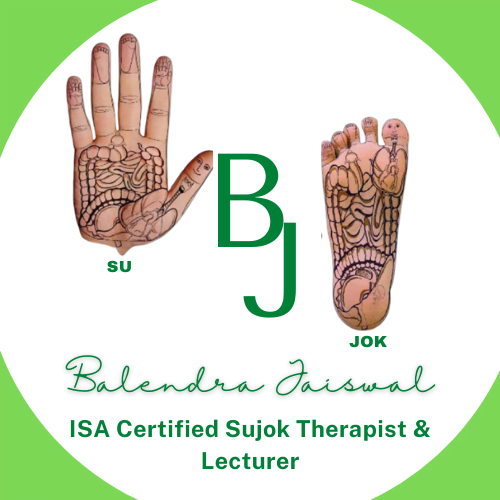Introduction: Sujok Therapy for Insomnia
In the hustle and bustle of life, insomnia can become a persistent challenge, affecting both physical and mental well-being. SuJok therapy offers a natural and effective approach to promote relaxation and restore healthy sleep patterns. Dedicate approximately half an hour a day to these practices, preferably in the evening, to experience the benefits.
Finding Correspondence Points: Sujok Therapy for Insomnia
The key correspondence points for normalizing sleep are located in the back of the head, neck, pineal body, kidneys, and celiac plexus, along with the energy points on the Yin-surface of the hand and foot, as illustrated in the figure.
Effective Stimulation Techniques:
Warm-Up Energy Points: Begin by warming up the energy points until you feel a pleasant warmth in the palms of your hands. This step is crucial for relaxation and letting go of persistent thoughts.

Finger Massage and Seed Application:

- Perform a light finger massage on the areas corresponding to the back of the head and kidneys.
- Follow with an intensive massage of the cervical section correspondence area.
- Fix seeds to the most tender points in these areas and massage them for 3 to 5 minutes.
Bedtime Elastic Rubber Band Technique:

- If you find it difficult to fall asleep, put a prepared elastic rubber band on the thumb base without pulling it too tight.
- After five or ten minutes, once you feel a bit drowsy, remove the rubber band.
- This technique can also be applied if you wake up at night and struggle to fall back asleep.
Conclusion:
By incorporating these SuJok therapy techniques into your evening routine, you can promote relaxation, relieve insomnia, and enjoy a more restful sleep. Consistency is key, so make SuJok therapy a part of your daily self-care regimen. If sleep difficulties persist, it’s advisable to consult with a healthcare professional for personalized advice.
FAQs (Frequently Asked Questions) about SuJok Therapy for Insomnia
Q1: What is SuJok Therapy, and how does it help in promoting restful sleep and relieving insomnia?
SuJok Therapy is a holistic healing method that involves stimulating specific points on the hands related to different body organs. In the context of sleep and insomnia relief, SuJok therapy targets key correspondence points in the back of the head, neck, pineal body, kidneys, and celiac plexus. This stimulation aims to induce relaxation and restore healthy sleep patterns.
Q2: How can I locate the correspondence points for promoting sleep in SuJok Therapy?
The correspondence points for promoting sleep are located in the back of the head, neck, pineal body, kidneys, and celiac plexus, along with the energy points on the Yin-surface of the hand and foot. The figure provided in the article illustrates the specific locations of these points.
Q3: What are the recommended techniques for stimulating the correspondence points to promote sleep?
SuJok Therapy for promoting sleep involves warming up the energy points until a pleasant warmth is felt in the palms. Additionally, a light finger massage on areas corresponding to the back of the head and kidneys, followed by an intensive massage of the cervical section, can be performed. Fixing seeds to the most tender points and massaging them for 3 to 5 minutes is also recommended.
Q4: How does the bedtime elastic rubber band technique contribute to better sleep?
The bedtime elastic rubber band technique involves putting a prepared elastic rubber band on the thumb base without pulling it too tight. After five or ten minutes, once a slight drowsiness is felt, the rubber band is removed. This technique can aid in falling asleep or can be applied if waking up at night and struggling to fall back asleep.
Q5: How long should I practice SuJok Therapy for sleep benefits, and when is the best time to do it?
Dedicating approximately half an hour a day, preferably in the evening, to SuJok Therapy practices is recommended for sleep benefits. Consistency is key, so making it a daily self-care regimen contributes to the effectiveness of the therapy.
Q6: Is SuJok Therapy safe for promoting sleep, and are there any contraindications?
SuJok Therapy is generally considered safe for promoting sleep. However, if sleep difficulties persist, it is advisable to consult with a healthcare professional for personalized advice. Individuals with specific health conditions or concerns should seek guidance before starting any alternative therapy.
Q7: Can SuJok Therapy be combined with other sleep-promoting practices?
Yes, SuJok Therapy can be complemented with other sleep-promoting practices such as maintaining a consistent sleep schedule, creating a relaxing bedtime routine, and ensuring a comfortable sleep environment. Combining these practices can enhance overall sleep quality.
Q8: Are there any specific considerations for individuals with chronic insomnia?
For individuals with chronic insomnia, it is advisable to consult with a healthcare professional for a comprehensive evaluation and guidance. SuJok Therapy can be part of a holistic approach to managing insomnia, but personalized recommendations based on individual health conditions may be necessary.
